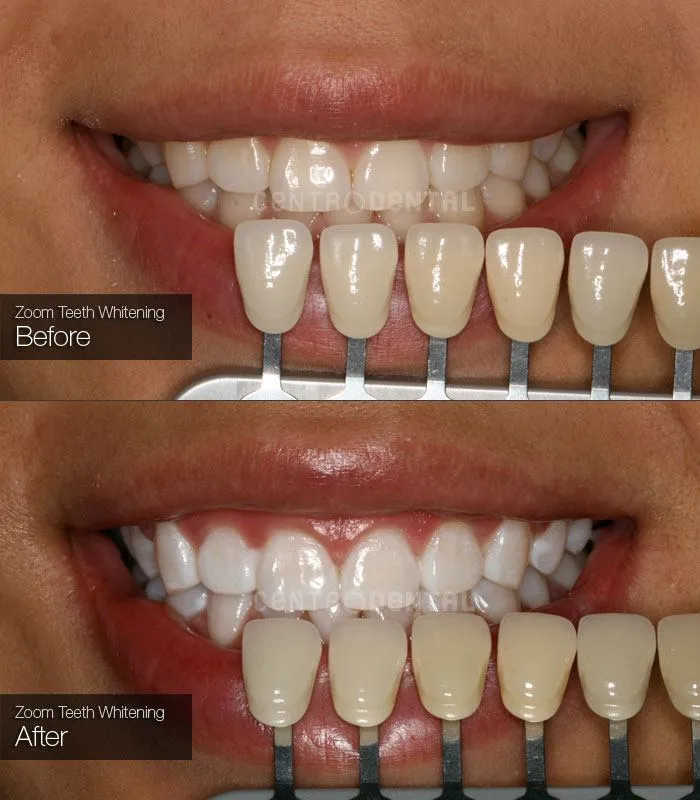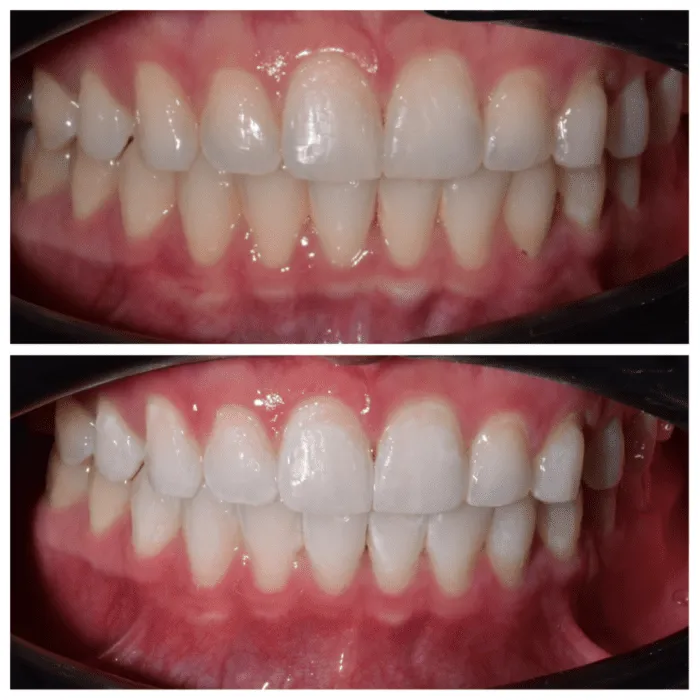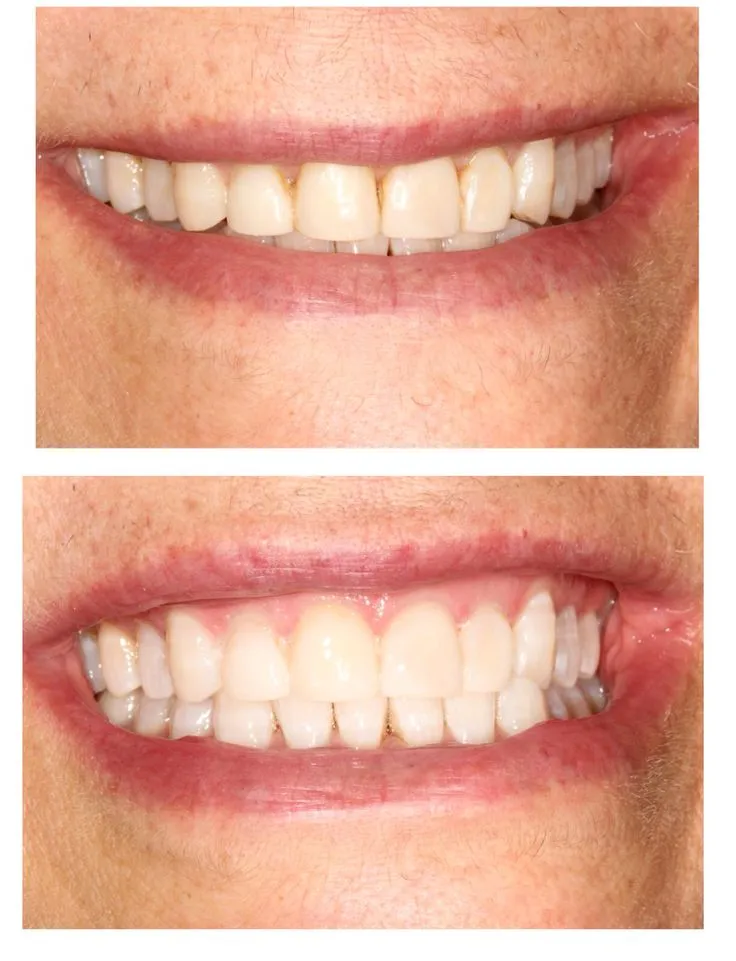What is Zoom Whitening?
Zoom Whitening is a popular and effective teeth whitening treatment offered by dental professionals. It is a chairside procedure, meaning it’s performed in your dentist’s office, providing a quick and noticeable improvement in the brightness and appearance of your smile. The process involves the application of a high-concentration hydrogen peroxide gel to the teeth, which is then activated by a special blue LED light. This light accelerates the whitening process, allowing for significant results in a single appointment. Zoom Whitening is designed to tackle stains caused by various factors, including aging, food, drinks like coffee and wine, and smoking. It’s a common choice for those seeking a brighter, more youthful smile without the hassle of take-home whitening kits that can sometimes be less effective or require more patience to see results.
How Does Zoom Whitening Work?
The science behind Zoom Whitening revolves around the use of a potent bleaching agent and light activation. The hydrogen peroxide gel, when applied to the teeth, penetrates the enamel and dentin, breaking down the stain molecules. The blue LED light emitted by the Zoom lamp serves as a catalyst, speeding up this chemical reaction. The light’s specific wavelength helps to activate the peroxide more efficiently, allowing it to penetrate deeper and whiten the teeth more effectively. This process doesn’t damage the tooth structure itself, but rather works to oxidize the discolored organic materials within the tooth. The result is a brighter, whiter smile that can last for a considerable amount of time, depending on lifestyle and maintenance. The entire process is carefully monitored by a dental professional to ensure safety and optimal results.
The Zoom Whitening Process

The Zoom Whitening process begins with a consultation and examination by your dentist to assess your suitability for the treatment. The dentist will check for any underlying dental issues, such as cavities or gum disease, that need to be addressed before whitening. Once you’re cleared, the procedure starts with the teeth being cleaned and polished to remove any surface debris. A cheek retractor is then placed to keep your mouth open, and a protective barrier is applied to your gums to prevent irritation from the whitening gel. The whitening gel is then applied to the teeth, and the Zoom light is positioned to shine directly onto them for about 15 minutes. This process is repeated for up to three cycles, depending on the desired level of whitening. After the treatment, the gel is removed, and your teeth are rinsed. Post-treatment instructions are provided, including guidelines on food and drink to avoid to maintain the results.
Fact 1 The Effectiveness of Zoom Whitening
One of the most significant advantages of Zoom Whitening is its effectiveness. The in-office procedure, combined with the potent whitening gel and the accelerating power of the LED light, delivers dramatic results in a relatively short amount of time. Patients often experience a whitening of several shades, with the potential to significantly improve the appearance of their smiles. The effectiveness depends on factors such as the type and severity of stains, as well as individual tooth enamel. However, most people see a noticeable difference immediately after the treatment. The results are often more pronounced and faster compared to over-the-counter whitening products or take-home kits, making Zoom Whitening a popular choice for those seeking a quick and impactful smile transformation. The immediate impact is a major factor in why many patients find it worthwhile.
The effectiveness of Zoom Whitening can also be influenced by the patient’s oral hygiene habits and lifestyle choices. Avoiding or limiting the consumption of staining substances like coffee, tea, red wine, and tobacco can help maintain the results for a longer period. Regular dental checkups and cleanings are also crucial to ensure the teeth remain healthy and the whitening effects are preserved. Following the dentist’s post-treatment care instructions is key to maximizing the longevity of the results. With proper care, the whitening effects of Zoom Whitening can last for several months to a few years, providing a bright and confident smile for an extended period.
How long do Zoom Whitening results last?
The longevity of Zoom Whitening results varies from person to person, typically lasting from several months to a few years. This timeframe is largely influenced by dietary habits, oral hygiene practices, and lifestyle choices. Consuming foods and drinks that stain teeth, such as coffee, tea, red wine, and berries, can gradually diminish the whitening effect. Smoking and other tobacco use can also significantly reduce the duration of the results. Maintaining excellent oral hygiene, including regular brushing, flossing, and dental checkups, helps to preserve the whiteness. Many dentists recommend occasional touch-up treatments or using take-home whitening kits to maintain the desired brightness and extend the lifespan of the results.
Fact 2 Zoom Whitening Cost and Value

The cost of Zoom Whitening is generally higher than other teeth whitening options, reflecting its in-office procedure and the use of advanced technology. Prices can vary depending on the location, the dental practice, and any promotional offers available. However, it’s crucial to consider the value that Zoom Whitening offers. The procedure provides immediate and significant results, which are often more dramatic than those achieved with take-home kits or over-the-counter products. Moreover, the treatment is performed by a dental professional, ensuring safety and proper application. While the initial cost might be higher, the quick results, the convenience of an in-office treatment, and the potential for long-lasting effects can make Zoom Whitening a valuable investment in your smile and self-confidence. Many patients find the benefits outweigh the cost.
Comparing Zoom Whitening Cost
When evaluating the cost of Zoom Whitening, it’s helpful to compare it with other teeth whitening methods. Over-the-counter whitening strips and gels are typically the most affordable, but they may not provide the same level of whitening or achieve results as quickly as Zoom Whitening. Take-home whitening kits provided by a dentist offer a middle-ground in terms of cost and effectiveness, but require more time and patient compliance. Professional teeth whitening is a premium service. Ultimately, the best choice depends on individual needs, preferences, and budget. The significant whitening and the convenience of the process justify the cost for many people. The peace of mind of having a dental professional perform the procedure is also a significant factor for those seeking a safe and effective treatment.
Fact 3 Zoom Whitening and Sensitivity
Tooth sensitivity is a common side effect of Zoom Whitening, and it can vary in severity from mild to moderate. The hydrogen peroxide in the whitening gel can temporarily make the teeth more porous, leading to increased sensitivity to hot and cold temperatures. This sensitivity typically subsides within a few days after the treatment. Your dentist can take steps to minimize sensitivity during the procedure, such as applying a desensitizing agent to the teeth before and after whitening. They may also recommend the use of a fluoride toothpaste or other desensitizing products to use at home. While sensitivity can be a concern, it’s usually temporary, and the resulting brighter smile often outweighs the discomfort for many patients. The dentist will discuss potential side effects and ways to manage sensitivity before the procedure.
Managing Tooth Sensitivity

To manage tooth sensitivity after Zoom Whitening, several strategies can be employed. Using a toothpaste designed for sensitive teeth, which contains ingredients like potassium nitrate or stannous fluoride, can help block the tubules in the dentin and reduce sensitivity. Avoiding very hot or cold foods and drinks for a few days after the treatment can also minimize discomfort. The dentist may also recommend using a fluoride rinse or applying fluoride varnish to the teeth to strengthen the enamel. Over-the-counter pain relievers, such as ibuprofen or acetaminophen, can be taken to alleviate any pain or discomfort. Following all post-treatment instructions provided by your dentist is crucial for managing sensitivity and ensuring a comfortable experience.
Fact 4 The Convenience of Zoom Whitening
One of the significant benefits of Zoom Whitening is its convenience. As an in-office procedure, it can be completed in a single appointment, usually lasting about an hour or so. This makes it a time-saving option for those who want immediate results without the commitment of a lengthy at-home whitening regimen. The convenience factor is especially appealing for individuals with busy schedules or those who prefer professional treatment over managing the process themselves. You simply sit back in the dental chair, and the dentist handles the entire process. This eliminates the need for custom trays, daily applications, and the potential for user error. This convenience makes Zoom Whitening a practical choice for many.
Benefits of In-Office Whitening
In-office teeth whitening, such as Zoom Whitening, offers several advantages over at-home methods. The primary benefit is the ability to achieve rapid and significant whitening results under the supervision of a dental professional. Dentists can use higher concentrations of whitening agents than are available in over-the-counter products, leading to more dramatic changes in tooth shade. In-office whitening also ensures the treatment is administered safely, with measures taken to protect the gums and other soft tissues. Additionally, a dentist can identify and address any underlying dental issues before whitening, ensuring the best possible outcomes. The professional setting also provides the convenience of having the procedure done quickly, which is a significant advantage for many patients seeking immediate smile improvement. In-office whitening offers a combination of speed, safety, and effectiveness.
Fact 5 Alternatives to Zoom Whitening

While Zoom Whitening is a popular choice, other teeth whitening alternatives exist, each with its own set of benefits and drawbacks. Take-home whitening kits, provided by your dentist, offer a more gradual approach. They involve custom-fitted trays and a lower concentration of whitening gel, used over a period of weeks. Over-the-counter whitening strips, gels, and toothpastes are easily accessible but may deliver less significant results. For more stubborn stains, porcelain veneers or dental bonding might be considered, though they are more invasive and costly. The best whitening option depends on individual needs, the degree of discoloration, and budget considerations. Consulting with a dentist is essential to determine which treatment will best suit your specific situation. The dentist can assess your oral health and recommend the most appropriate and effective whitening method.
Other Whitening Options
Besides the options discussed, various other teeth whitening treatments are available. Whitening toothpastes can remove surface stains and can be incorporated into daily oral hygiene routines. Whitening mouthwashes also assist in removing stains and maintaining whiteness. For deeper stains, professional teeth cleaning can remove surface stains and make a subtle difference in tooth color. The use of whitening pens is another option for targeted touch-ups. However, the effectiveness of these methods varies, and it’s crucial to manage expectations. Professional guidance is the key to identifying the best options. A dental professional can provide a personalized approach based on the type and severity of staining, oral health, and individual preferences. This ensures the best and safest outcomes for a brighter, healthier smile.
